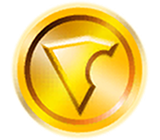Form tracing and roundness testing are two methods that can be used to evaluate the form and roundness of objects. These methods are respectively used to evaluate the sphericity and sphericity of the object. Both form tracing and roundness testing are methods that can be used to evaluate the form and roundness of objects. Form tracing is one method, and roundness testing is the other. These two methods are used in conjunction with one another to determine whether or not the object in question is spherical. When utilizing these methods, one of the options that can be taken advantage of is tracing the forms that need to be filled out.
A profilometer is a common type of measuring tool that is utilized quite frequently when it comes to determining the form or contour of a surface. The term "profilometer" describes this type of measuring tool. There are many different ways in which the readings can be interpreted, and there are also many different ways in which those interpretations can be presented. The stylus is able to detect and transmit even the most minute variations in height as it is moved across the surface, and it contours to the surface as it does so. Additionally, it is able to detect and transmit these variations as it moves. The benefits that are offered by each of these types are distinct from those that are offered by the other types, and the precise nature of those benefits can shift and change depending on the requirements of the application. These numerous types each come with their own unique collection of advantages, which are distinct from those offered by the other types. The information that has been gathered is analyzed so that a calculation can be made to determine the distance from a perfect circle, and any form errors, such as lobing or tapering, can be found so that they can be corrected.
The calculation that is made to determine the distance from a perfect circle determines the distance from a perfect circle. In the event that there are any errors in the form, they can be amended.
The phrase "coordinate measuring machine" is what the abbreviation CMM refers to in full, and the phrase itself is what the abbreviation stands for
-
The Coordinate Measuring Machine (CMM) is a multipurpose metrology instrument that can be used for a variety of measurements, such as testing for roundness and tracing the form of an object
-
Its primary function is to measure distances between points on a coordinate system
-
The primary purpose of this tool is to determine the distances that exist between different points on a coordinate system
-
The primary objective of using this instrument is to ascertain the lengths of the intervals that exist between various points on a coordinate system
-
They accomplish this by moving a stylus along the surface of the object being scanned in order to collect data points from it as it is being scanned
-
Move the stylus along the surface of the object as you continue to do this so that you can achieve your goal
-
CMMs have a high degree of accuracy and are able to measure intricate shapes in a manner that is highly repeatable
-
In addition, they are capable of measuring a wide range of dimensions
-
In addition to this, they are able to measure a diverse selection of different dimensions
In addition to this, they are able to measure a wide variety of different dimensions simultaneously. Optical profilers provide a number of benefits, including the capacity to measure surfaces irrespective of the degree to which they are rough or smooth, high measurement speeds, and the capability to carry out nondestructive testing. They are especially helpful for things that have surfaces that are sensitive or delicate, as these surfaces tend to be more easily damaged than other surfaces. This makes the things that have these surfaces particularly useful. They are able to provide insights into the surface texture of an object by measuring parameters such as Ra, which stands for average roughness, Rz, which stands for peak-to-valley height, and Rt, which stands for total roughness. All of these parameters measure the surface of the object. These parameters include the height difference between the peak and the valley, the average roughness, and the total roughness.
In order to carry out tasks like form tracing and roundness testing, the overwhelming majority of businesses typically make use of what kinds of software?
1. Form tracing and testing for roundness are two methods that have a wide variety of applications across a wide variety of commercial markets and industries
2. Other methods, such as testing for flatness, also have a wide variety of potential uses
3. Testing for ellipsis is another method that can be used
In the aerospace industry, the manufacturing process places a significant emphasis on both form tracing and roundness testing, which are both very important aspects of the process. This is because form tracing and roundness testing are both very important aspects of the process. This is due to the fact that the aerospace industry is among the most technologically advanced in the entire world. This is because testing for roundness and form tracing are both extremely significant components of the process. As a result, this outcome was expected. When measurements are taken accurately, it is possible to manufacture components with improved aerodynamics. This is only possible if the measurements themselves are taken accurately. When measurements are taken precisely, it is possible to manufacture components with improved aerodynamics. This is made possible by accurate measurement. The only way that this is even remotely possible is if the measurements themselves are precise.
Precision is of the utmost significance when it comes to the production of medical equipment and supplies. This is due to the fact that accuracy not only guarantees that the device will work as intended, but it also shields the patient from any potential harm that may result. In the process of evaluating components, two techniques that can be utilized are the tracing of the component's form and the testing of the component's roundness. Both of these techniques are tests of the component's shape. The roundness of the component can also be evaluated, which is yet another method that can be utilized. This system is comprised of a wide variety of parts, some of which include surgical needles, implants, prosthetics, and surgical instruments. Components such as lenses, mirrors, probes, and calibration standards are put through these tests to ensure that they are of the highest possible quality and level of perfection. These tests are designed to ensure that the components are perfect. In addition to this, the standards are adjusted based on the results of these examinations, which are also used to calibrate them. The purpose of these tests is to ensure that all of the component parts are flawless.
Measurements of the form and roundness of a precision instrument need to be carried out with the utmost accuracy if the instrument is to function at the highest possible level of accuracy and performance. They are helpful for determining the shape and roundness of a variety of components, including gears, bearings, shafts, molds, and tooling, to name a few of the things that can be used on which they can be used. They can be used on these and other things. With their assistance, we are able to determine the contours of the components, including how round they are. These are the types of components that can include a wide variety of different things, such as gears, bearings, shafts, and molds, amongst other things. These measurements are helpful in determining where there are deviations, increasing product quality, optimizing machining processes, lowering wear, and reducing wear overall. They can also be used to reduce wear overall. They are also capable of lowering the overall rate of wear. They are also able to slow down the rate of wear and tear over the entire system. Additionally, the use of these measurements ensures that electronic devices have an accurate shape. In addition, the utilization of these measurements guarantees that electronic devices have accurate three-dimensional shapes.
Optics and photonics are two of the fields that require the use of components such as form tracing and roundness testing. These fields also require the use of components like these. Additionally, the utilization of components such as these is necessary in these fields. Optics and photonics are two areas of study that place a significant emphasis on the importance of activities such as tracing the form of an object and determining whether or not the object is round. It is essential to measure the exact form and roundness of an object in order to ensure that the maximum amount of light is transmitted, achieve accurate focusing, and reduce aberrations. Other goals of these measurements include reducing aberrations and achieving accurate focusing. It is also necessary to take precise measurements of an object's form. The elimination of aberrations and the realization of precise focusing are two additional goals that can be accomplished through the use of these measurements.


